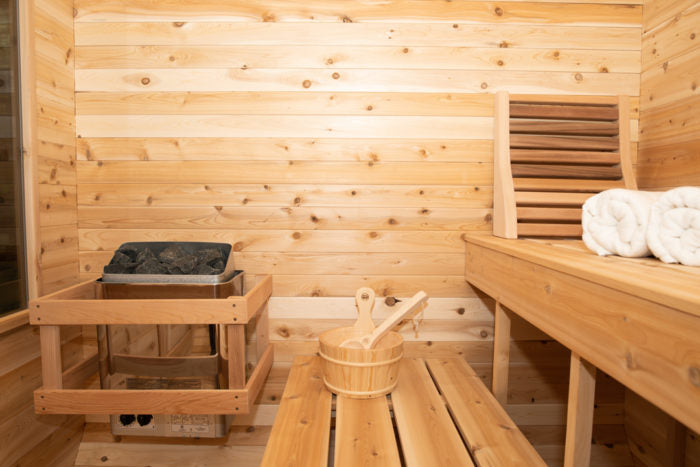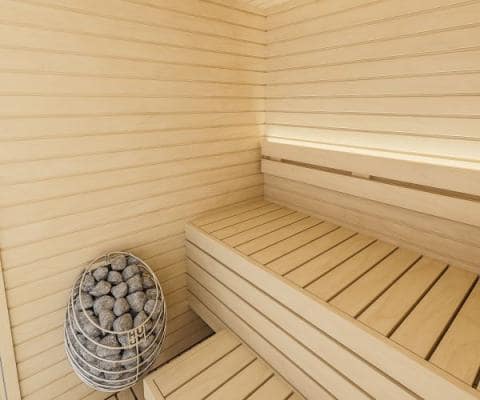6 Simple Techniques For Traditional Sauna
6 Simple Techniques For Traditional Sauna
Blog Article
Unknown Facts About Traditional Sauna
Table of ContentsFascination About Traditional SaunaUnknown Facts About Traditional SaunaTraditional Sauna Things To Know Before You BuyThe 3-Minute Rule for Traditional SaunaThe Ultimate Guide To Traditional Sauna
A lot of the weight shed in a sauna is water loss and is re-gained upon rehydrating. Without an uncertainty sauna can be an important part of a healthy and balanced weight loss program. To look at the differences between traditional and IR saunas, I will certainly separate these into verifiable, theoretical, and produced distinctions.Hence, the best factor in the saunawhich goes to the ceiling straight over the sauna heateris commonly in between 185 and 190 F. Claims that a typical sauna exceeds 200 F is simply not true and not applicable for electrical saunas sold in the United States. The temperature level for a far-infrared sauna is generally set between 120 and 140 F; however, unlike the conventional sauna, the goal in and IR area is not to attain a heat.

When a conventional sauna has been effectively warmed, the sauna walls are cozy, the air temperature has accomplished established temperature and the rocks are extremely heated. As an interesting side note, the warmed walls and the rocks are giving off far-infrared warmth, incorporated with the heated air, to develop an "covering warmth".
Traditional Sauna Things To Know Before You Get This
When the heat is accomplished, the components cycle on and off to maintain the heat. The majority of conventional sauna individuals enjoy pouring water over the rocks to produce vapor to raise sauna humidity levels. The benefits of putting water over the rocks include: making the space a lot more comfy, dampening the nasal passages, and permitting the usage of aromatherapy by mixing important oils with the water.

When the energy enters the body, it causes the body temperature to increase and eventually results in perspiration. In an infrared sauna it's vital for the emitters/heaters to remain on virtually frequently. Given that there is no mass of rocks to preserve warmth, the sauna will cool if the emitters turned off.
The 7-Second Trick For Traditional Sauna
As pointed out above, the sauna bather in an infrared room wants to place himself in front of running emitters to get optimal advantage from the heat. The home heating time for both rooms can be extremely different, relying on just how the rooms are utilized. For a typical sauna, a bather must allow 30-40 mins for the space to achieve a wanted temperature and to effectively pre-heat the rocks.

A well created sauna will generally accomplish a temperature level of 150-160 F in regarding 30-40 minutes. For hotter temperature levels, the space might need to heat for a longer duration.
To some, 15 mins was "lost" while the infrared energy heated up the wood panels rather than warming a body, while others find a pre-heated space to be extra comfortable and think a raised beginning temperature is necessary to begin perspiring. The length of suggested use for every area is roughly the very same (10-15 mins per session); nonetheless, because of the reduced air temperatures and the capacity to really feel the impacts of infrared warm faster than a conventional sauna, it is not unusual for a person to invest an overall of 20-30 minutes in an infrared sauna.
Traditional Sauna - Truths

The ordinary cost per kWH of electrical energy in the U.S. is approximately $0.11, so a 4.5 kW heating unit will cost around $.50 to run for one hour, if the heater runs constantly for one hour. Normally a sauna heater will certainly compete 75% of the first hour and 50% of succeeding hours on considering that the aspects cycle once the established temperature is attained.
A 2 person far-infrared space is typically physically smaller than a typical sauna, often regarding 4' x 4' or smaller sized. The IR furnace is generally 1.5-1.7 kW utilizing a 120 volt 15 amp plug-in service. Considering that the area can be utilized earlier than a sauna room, we will certainly presume the room is utilized for to of an hour consisting of warm up time.
Ultimately, there is a hardly ever gone over distinction in the social experience in between navigate here both spaces. While our society has actually lost several of the social benefit of the standard sauna experience, it can be really socially gratifying (Traditional Sauna). From family time in the sauna, to heart-felt discussions view with better halves, to sauna partiesthe conventional sauna experience can cause intimate mingling
Excitement About Traditional Sauna
The majority of higher end infrared areas consist of tinted light treatment, sound systems and full-glass fronts.
Report this page